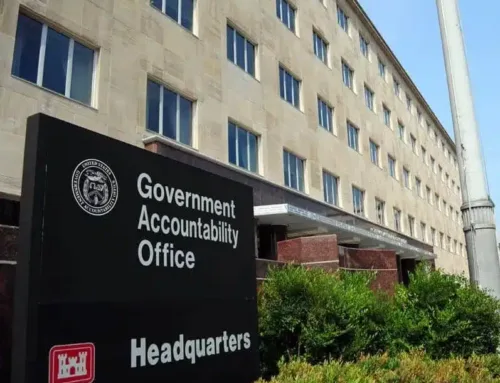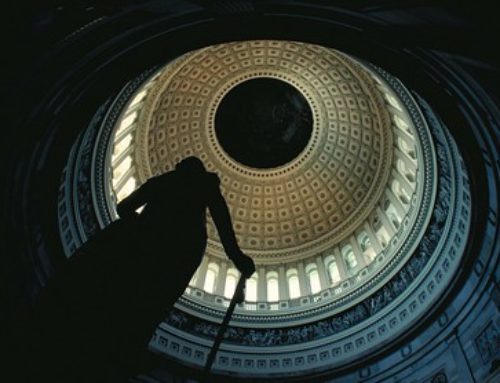TCS executive vice president, Steve Ellis offered the following testimony on H.R. 2406, a bill to reauthorize and amend the National Oceanographic and Atmospheric Administration Commissioned Officer Corps Amendments Act of 2019. You can read it below in full. You can also download it as a PDF.
Testimony of Stephen Ellis
Executive Vice President, Taxpayers for Common Sense
U.S. House of Representatives Committee on Natural Resources
Subcommittee on Water, Oceans, and Wildlife legislative hearing on select ocean-related bills
May 8, 2019
Good morning Chairman Huffman (D-CA), Ranking Member McClintock (R-CA), members of the subcommittee. Thank you for inviting me to testify. I am Steve Ellis, Executive Vice President of Taxpayers for Common Sense, a national nonpartisan budget watchdog. I will use my time to comment on H.R. 2406, a bill to reauthorize and amend the National Oceanographic and Atmospheric Administration Commissioned Officer Corps Amendments Act of 2019.
Many areas of government have continued operations under expired authorization or without adequate congressional oversight. In fact, TCS has criticized Congress under leadership of both parties for not conducting adequate oversight and holding the Executive branch sufficiently accountable. This held true under divided and single party control of government. So, in that light, taking the steps to reauthorize the NOAA Officer Corps is heartening and the subcommittee is to be congratulated.
That said, TCS is not taking a position on the legislation at this time. Instead, I will lay out some concerns with the legislation as well as opportunities for oversight, investigation, and reform. We believe taxpayers will be better served if the subcommittee conducts greater oversight over the NOAA Corps and its function prior to adopting this legislation.
H.R. 2406
Among other things, H.R. 2406 would dramatically increase the number of authorized NOAA Corps commissioned officers to 500, increase the number of flag officers, enable the Secretary of Commerce to determine the ratio of officers in each grade, extend a series of protections and benefits currently only available to members of the Armed Forces including education loan repayment, interest payment, and pre-commissioning education assistance.
Congress set the authorized limit of NOAA Corps Officers at 321 officers with certain provisions, if met, to enable the total to increase to 379.[1] The increase to 500 would be a 55 or 31 percent increase over the legislative caps respectively. A May 15, 2018 decision memo approved by Rear Admiral Silah, indicates the average commissioned officer strength between fiscal year (FY) 2014 and 2017 at 317.[2] This is roughly the same as is listed in the online lineal list which has 302 officers and 12 officer candidates.[3]
It is unclear why the proportionally large increase in authorized officers is needed. NOAA is undergoing a fleet recapitalization plan; typically more modern vessels require fewer crew, not more. In addition, NOAA intends to pursue fewer different types of vessels which reduces operational and maintenance training requirements.
The increase in benefits to NOAA Corps officers is also curious. These benefits are provided to the military services, including enlisted personnel (of which there are none in the NOAA Corps), to attract and retain a qualified all-volunteer military that is willing and capable of being in harm’s way. This is not meant to disparage the NOAA Corps’ laudable mission, but to point out that provision of benefits to NOAA Corps officers simply because they also wear a uniform doesn’t necessarily make sense.
Oversight Issues for the NOAA Corps
There are several areas Congress should explore in oversight regarding the NOAA Corps.
Use of contract vessels – NOAA currently does use contract vessels for some of their work. These could either be entirely contracted for certain data collection, or contract vessel and crew with a NOAA scientific team and specific equipment onboard for data collection. This can be a cost-effective way to carry out the NOAA mission with less expense than full vessel recapitalization. The agency’s FY2020 budget justification stipulates that: “NOAA’s fleet recapitalization plan is a living document and is fungible to account for unanticipated/emerging requirements and other fact of life changes.”[4] I would anticipate that in any scenario there would still need to be some NOAA vessel capacity to respond quickly to emergencies such as post-disaster surveys for navigational safety. The subcommittee should seek clarity about the cost and performance differences between contract and NOAA vessels for core NOAA Corps functions.
Actual personnel need – H.R. 2406 sets the cap for NOAA Corps Officers at 500. As recently as 2002 Congress envisioned 321 and a potential for 379 by 2009. What is the actual number of officers needed? My experience as a longtime observer of the military is that the number of officers will expand to meet the cap. Factors such as use of civilian federal employees, contractors and even the use of unmanned survey vessels should be considered. It is notable that while Coast Guard and Naval Vessels have enlisted crewmen, NOAA vessels rely on mates and able-bodied seaman and other personnel for crew and engineering billets.[5] Indeed, some NOAA ships have a civilian Commanding Officer (Master).[6]
Vessel usage – The FY2020 budget justification indicates that the NOAA intends to achieve 2,525 days at sea (DAS) with its 15 operational vessels this year (NOAA Ship Hi’ialakai requires major repair and is unavailable)[7]. That works out to just under 170 DAS per vessel. In its ship recapitalization plan, NOAA indicates that each vessel requires 130 days per year for maintenance, crew rest, and research staging.[8] That leaves a gap of 65 days per year.
NOAA cost comparisons – For more than 20 years NOAA has been directed to acquire the hydrographic data used to create nautical charts from the private sector “to the greatest extent practicable and cost-effective.” In 2017 the Government Accountability Office (GAO) documented that NOAA’s efforts to make that cost comparison has fallen short. They failed to include some of the capital costs of their hydrographic survey program, including a $24 million vessel acquisition and maintenance costs. On the flip side, NOAA failed to include contract administration costs for private sector hydrographers. This is clearly an area NOAA needs to improve and is ripe for subcommittee oversight.
Reevaluation of uniformed NOAA Corps – the Army, Navy, Air Force, Marine Corps, and Coast Guard have military compensation models in order to recruit and maintain an all-volunteer force to fight for and defend our nation. The vast majority of ships plying the world’s oceans and waterways are operated by civilian crews. The U.S. Army Corps of Engineers operates ships that are entirely civilian crewed. Indeed, the majority of the crewing on NOAA ships is done by civilians. The need for a uniformed element in NOAA is something that Congress should reevaluate as part of any reauthorization. Before enacting a large expansion of the authorized NOAA Corps uniformed officers, the Subcommittee should examine this issue and conclude whether a uniformed NOAA Corps continues to make sense.
Conclusion
NOAA’s mission includes important survey, mapping, research, and scientific activities that are essential for the public, commerce, and the government. The question is how to best meet these needs consistently and in the most cost-effective manner. TCS has consistently argued for Congress to rigorously conduct its oversight responsibility and reauthorize programs as necessary. As I have described there are significant issues that Congress should consider as part of reauthorizing the NOAA Commissioned Officer Corps.
Thank you for the opportunity to testify and I would be happy to answer any questions you might have.
[1] It is unclear if NOAA met these criteria, a May 15, 2018 memo sent to Rear Admiral Silah regarding the Fiscal Year 2018 Officer Corps Management Plan cites the 321 officer cap.
[2] Ibid.
[3] Lineal List of Active Duty Officers 02-May-2019 https://www.corpscpc.noaa.gov/lineallist/2019lineallist/ll_05022019.pdf
[4] NOAA FY2020 budget justification page OMAO-34 https://www.corporateservices.noaa.gov/nbo/fy20_bluebook/NOAA-FY20-Congressional-Justification.pdf
[5] See for instance NOAA Ship Reuben Lasker https://www.omao.noaa.gov/learn/marine-operations/ships/reuben-lasker/about/specifications
[6] NOAA Ship Oregon II https://www.omao.noaa.gov/learn/marine-operations/ships/oregon-ii
[7] NOAA FY2020 budget justification page OMAO-8 https://www.corporateservices.noaa.gov/nbo/fy20_bluebook/NOAA-FY20-Congressional-Justification.pdf
[8] The NOAA Fleet Plan Building NOAA’s 21st Century Fleet October 31, 2016 Page 36 https://www.omao.noaa.gov/sites/default/files/documents/The%20NOAA%20Fleet%20Plan_Final_31OCT.pdf







Get Social